2010 Ford Transit Connect – Click above for high-res image gallery
After relying on full-size E-series vans for commercial cargo carrying since the dawn of time, Ford is finally ready to offer North American businesses a more practical alternative. The Transit Connect is a compact, purpose-built van that's been available overseas since 2002, and Ford has sold more than 600,000 of the squat little haulers to businesses abroad over the past seven years. The company hopes that what's good for Europe is good for the States, so the first batch of U.S.-spec models are on their way to dealerships as you read this.
While the E-series vans are more than capable of carrying out their prescribed duties, for most, it's like using a sledgehammer to push a tack into a cork board. The Big-Es were simply more vehicle than necessary for most small businesses, especially those operating locally, delivering flowers, catering and plumbing. That's where the Transit Connect comes in.
Photos Copyright ©2009 Sam Abuelsamid / Weblogs, Inc.
A panel van version of the Ford Windstar/Freestar was actually produced for commercial customers from the mid-'90s until it was discontinued earlier this decade. The reworked family haulers never sold in large numbers, however, and weren't particularly optimized for the task. As gas prices spiked in 2007 and 2008, Ford saw a market for something smaller than the E-series, but bigger than the Chevrolet HHR panel van. The Transit Connect is just the ticket.
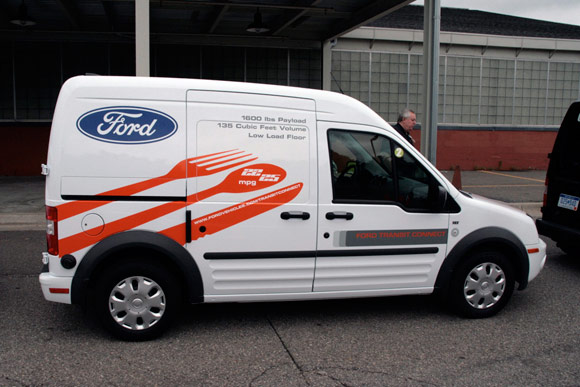
Unlike the Windstar, the Transit Connect was specifically developed as a commercial vehicle. It has a beefier chassis designed to withstand the rigors of daily business use and Ford has a different testing regime for its commercial and consumer vehicles. With a high strength steel front cross-member and extra side cross-members, the Transit Connect endured Ford's rigid durability testing and walked away unscathed. It's a stout runabout and a testament to Ford's engineering abilities.
The Transit Connect was designed to endure the rigors of operation in urban environments. Among the problems that city drivers regularly encounter are minor fender benders, so the TC is equipped with a rear bumper made of rolled steel designed to absorb the energy of rear-end impacts so prevalent in vehicles lacking rear windows.


On the topic of driving, anyone who's spent time behind the wheel of a full-size van understands the joys of body roll, pitch, a bouncy ride and lifeless steering. Thankfully, the Transit Connect is mercilessly devoid of the these unsavory characteristics. Although the TC does not share a platform with any of FoMoCo's cars, its layout is more car-like than truck-like, which pays dividends in the driving department. Our brief time behind the wheel (What, you were expecting a full-on track test?) didn't give us an opportunity to flog the Transit Connect within an inch of its life, but the steering wheel -- adjustable for both reach and angle -- was reasonably well weighted and provided adequate feedback.
The transverse, front-engine, front-wheel-drive layout and uni-body construction means there is no drive-shaft or massive frame rails to suck up valuable space, so the floor is low and flat, allowing parcels to be loaded with ease while keeping the center of gravity closer to the ground. In our relatively unladen tester, there was remarkably little body roll when cornering. Granted, this isn't a sports car, so don't expect to break a G in the bends, but reasonable handling should be universal these days and the Transit Connect doesn't have the potential to scare anyone. However, until we can get behind the wheel of a fully-loaded model (cargo, not options), we'll reserve judgment on it's ability to simultaneously shuffle and haul.


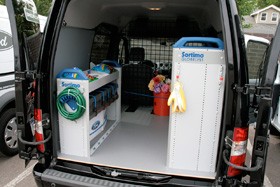

As a commercial cargo vehicle, the Transit Connect is designed to take whatever its users demand, both in mass and volume. On the mass side, the cargo variant has a load capacity of 1,600 lbs. Supporting that much weight requires fairly rigid springs, so the ride is on the stiff side, particularly when rolling freight-free. However, it's not uncomfortably harsh and the damping is set perfectly to keep the body from bouncing around, but a Lexus it is not. Over uneven patches of pavement, occupants will definitely feel the ruts and divots, but it's still remarkably more pleasant than driving your run-of-the-mill full-size pickup.
As the Transit Connect is a work truck first and foremost, it's got to have a comfortable and functional interior. Here, Ford scores high marks. As with other recent offerings from the Blue Oval, the seats are excellent, with firm cushions providing good lateral, back and thigh support. The dashboard is covered with hard plastic that's far from luxurious, but it should be fairly durable and easy to clean when coffee, soda or Thousand Island dressing inevitably finds its way onto the dash. The shift lever for the four-speed automatic is mounted on the center console, as are the window switches, and visibility out the front and sides are excellent thanks to the tall windshield and side glass.
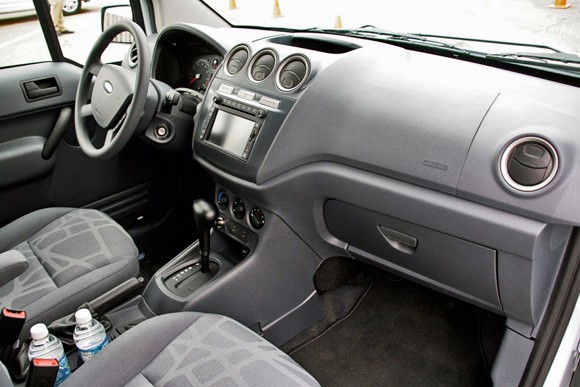
The Transit Connect is available as a five passenger wagon fitted with a second row bench seat, and both the cargo van and wagon variants are available with sliding side and rear doors and windows. Without that glass, rearward visibility is limited to the side mirrors – and that's not nearly enough. Although Ford does offer backup sensors as an option, the Transit Connect isn't available with a rear-view camera. As such, anyone spending considerable amounts of time in the cramped confines of urban environments might want to source a back-up camera from the aftermarket.
Sending power to the automatic transmission, is a 2.0-liter four-cylinder engine putting out 136 hp and 128 lb-ft of torque. The engine is smooth, but moving 3,470 pounds with that much power takes some time. The Transit Connect's acceleration is leisurely (at best), but acceptable given the intended purpose. Considering Ford is moving to six-speed transmissions on the rest of its line, one might wonder why this all-new (for North America) vehicle only gets four ratios. According to Ford, since the Transit Connect is designed primarily for urban markets, the lower gear ratios are the ones that will be used most often and Ford wants to keep the price of entry down to appeal to small businesses.




Despite the lackluster though smooth-shifting gearbox, the Transit Connect gets very respectable numbers from the EPA, with 22 mpg in the city and 25 mpg on the highway. A year from now, Ford will start offering a fully electric version with a choice of two lithium ion battery sizes: the 21 kWh pack will give a range of about 60 miles, while a 28 kWh pack should push the Transit Connect for about 100 miles.
The Transit Connect fits within FoMoCo's criteria of a commercial vehicle, so it's eligible for Ford's Work Solutions package. That means buyers can get the same in-dash computer available in the F-series and E-series that allows them to communicate with the home office, print out estimates and invoices, and send and receive email. The tool link system includes an RFID reader that can detect the tags applied to tools and other items that need to go out for various jobs, while the crew chief system communicates with the vehicles in a fleet and allows dispatchers to track locations and send the closest unit out for an assignment.

The Transit Connect's starting price comes in at $21,475 (including delivery), or $4,500 less than a base E-150 cargo van (and it will undoubtedly cost less to operate). With a 135 cubic-foot capacity behind the front seats, it more than doubles the 62.7 cubic-feet of the Chevy HHR Panel, and its 39-foot turning circle and compact length of just 180.6 inches makes it easy to maneuver in parking lots and tight urban alleyways. Ford has made arrangements with retailers on both sides of the country so dealers can order and install whatever types of storage, racks or other hardware buyers require.
The unit we drove was equipped with slide-out racks suitable for a caterer, while others were specifically equipped for florists, contractors and general delivery. And that's just the tip of the customizable iceberg. The Transit Connect seems poised to be all things to all businesses, and considering the lack of alternatives, we think it's got a serious chance at wide-spread success.
Photos Copyright ©2009 Sam Abuelsamid / Weblogs, Inc.
%Video-554%
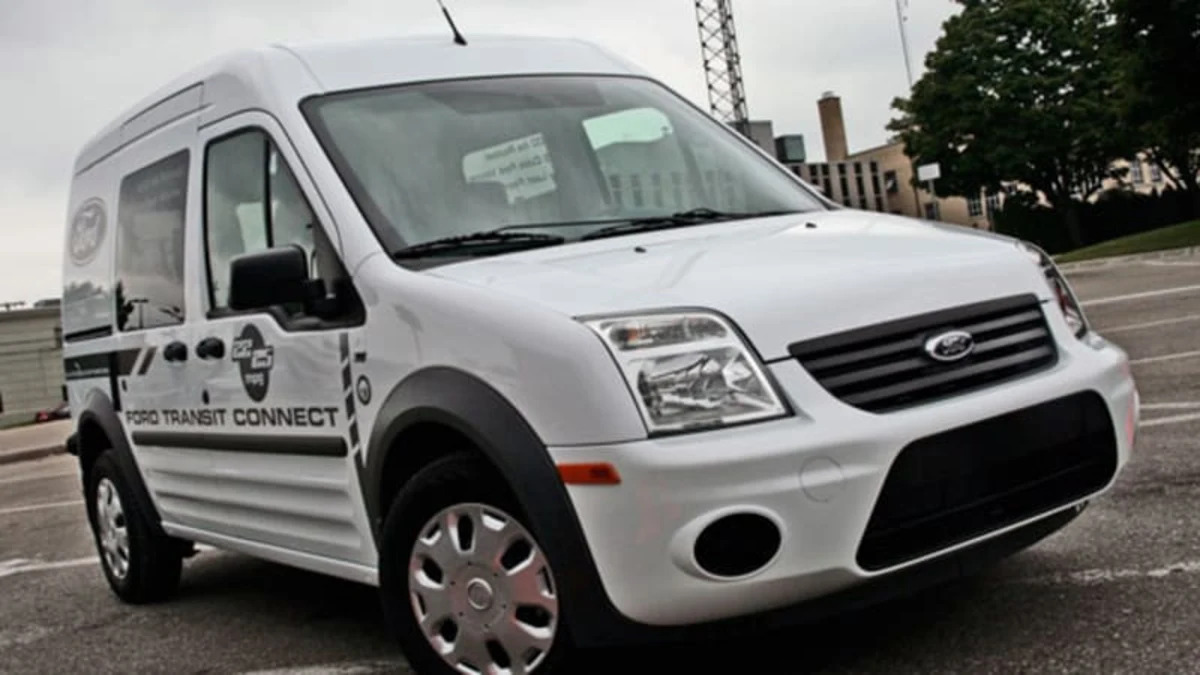
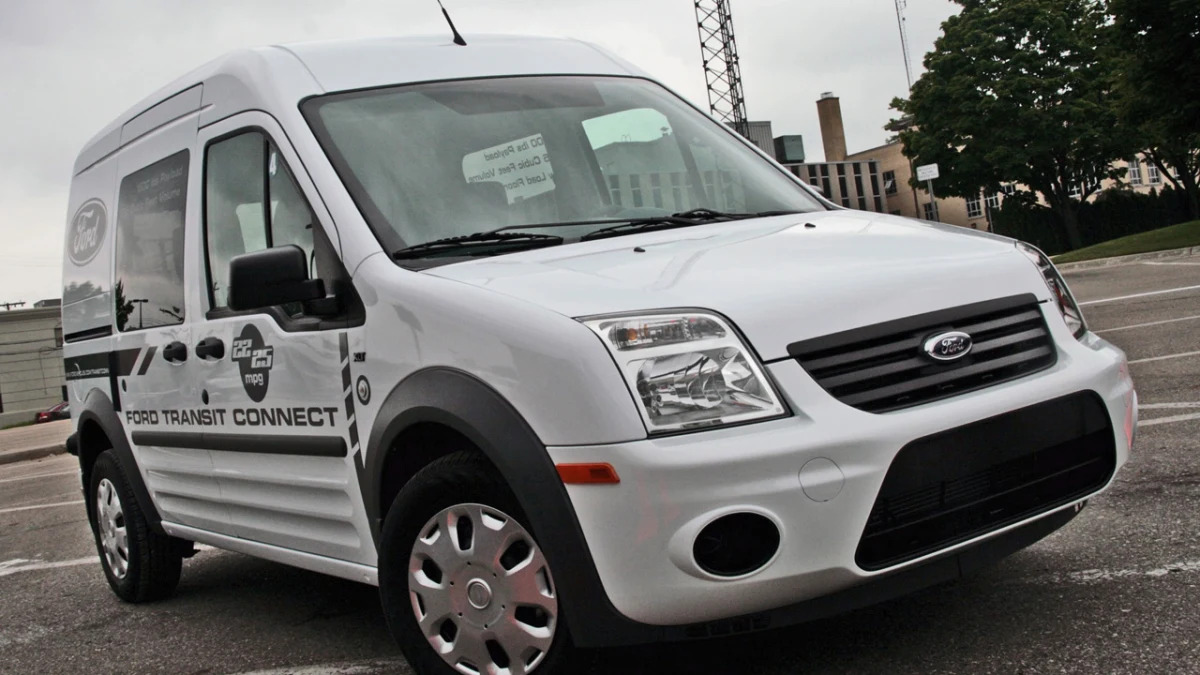

Sign in to post
Please sign in to leave a comment.
Continue